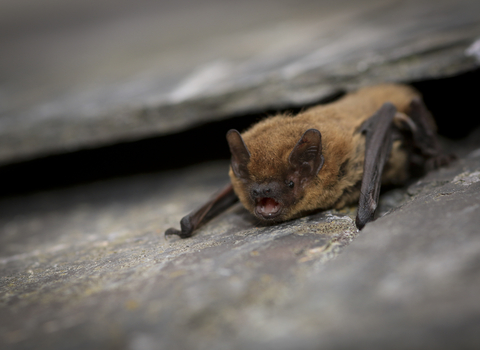
©Tom Marshall
Common pipistrelle
The common pipistrelle is so small, it can fit into a matchbox! Despite its size, it can easily eat 3,000 insects a night: look for it flitting around the garden or a lit lamp post as it chases its prey.
Scientific name
Pipistrellus pipistrellusWhen to see
April to OctoberSpecies information
Category
Statistics
Length: 3.5-4.5cmWingspan: 20-23cm
Weight: 3-8g
Average lifespan: 4-5 years
Protected in the UK under the Wildlife and Countryside Act, 1981. European Protected Species under Annex IV of the European Habitats Directive.
About
The common pipistrelle is our smallest and most common bat. All UK bats are nocturnal – preferring to come out only at night. They feed on midges, moths and other flying insects that they find in the dark by using echolocation. Common pipistrelles don’t have to look far to find food, whether they live in the countryside or the city!They roost in tree holes, bat boxes and even the roof spaces of houses, often in small colonies. During the summer, females form maternity colonies and have just a single pup each. Look out for common pipistrelles darting about as they hunt for insects in gardens or around streetlights just after sunset. They hibernate over winter, usually between November and April, but may come out to feed on warm days.
